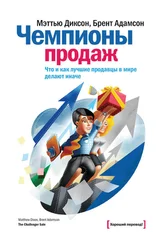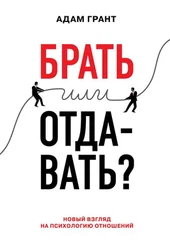29 Martin L. Hoffman. Empathy and Moral Development: Implications for Caring and Justice. New York: Cambridge University Press, 2000.
30 Samuel P. Oliner and Pearl Oliner. The Altruistic Personality: Rescuers of Jews in Nazi Europe. New York: Touchstone, 1992; Samuel P. Oliner. Ordinary Heroes // Yes! Magazine, November 5, 2001, www.yesmagazine.org/issues/can-love-save-the-world/ordinary-heroes' , см. также Eva Fogelman. Conscience and Courage: Rescuers of Jews During the Holocaust. New York: Doubleday, 2011.
31 John S. Dacey. Discriminating Characteristics of the Families of Highly Creative Adolescents // The Journal of Creative Behavior 23 (1989): 263–271. Teresa M. Amabile. Growing Up Creative: Nurturing a Lifetime of Creativity. Buffalo, NY: Creative Education Foundation, 1989.
32 Maarten Vansteenkiste, Bart Soenens, Stijn Van Pe-Tegem, and Bart Duriez. Longitudinal Associations Between Adolescent Perceived Degree and Style of Parental Prohibition and Internalization and Defiance // Developmental Psychology 50 (2014): 229–236; см. также Sharon S. Brehm and Jack W. Brehm. Psychological Reactance: A Theory of Freedom and Control. New York: Academic Press, 1981.
33 Donald W. MacKinnon. The Nature and Nurture of Creative Talent // American Psychologist 17 (1962): 484–495, and Personality and the Realization of Creative Potential // American Psychologist 20 (1965): 273–281.
34 John Skow. Erma in Bomburbia: Erma Bombeck // Time, July 2, 1984.
35 Adam M. Grant and David A. Hofmann. IBs Not All About Me: Motivating Hand Hygiene Among Health Care Professionals by Focusing on Patients // Psychological Science 22 (2011): 1494–1499.
36 Joan E. Grusec and Erica Redler .Attribution, Reinforcement, and Altruism: A Developmental Analysis // Developmental Psychology 16 (1980): 525-534-
37 Adam Grant. Raising a Moral Child // New York Times, April 11, 2014, www.nytimes.com/2014/ 04/12/opinion/ Sunday /raising-a-moral-child.html.
38 Christopher J. Bryan, Allison Master, and Gregory M. Walton. “Helping” Versus “Being a Helper”: Invoking the Self to Increase Helping in Young Children // Child Development 85 (2014): 1836–1842.
39 Christopher J. Bryan, Gabrielle S. Adams, and Benoit Monin. When Cheating Would Make You a Cheater: Implicating the Self Prevents Unethical Behavior // Journal of Experimental Psychology: General 142 (2013): 1001–1005.
40 Penelope Lockwood andZiva Kunda. IncreasingtheSalience of One's Best Selves Can Undermine Inspiration by Outstanding Role Models // Journal of Personality and Social Psychology 76 (1999): 214–228; см. также Albert Bandura. Self-Efficacy: The Exercise of Control. New York: Freeman, 1997.
41 Bill E. Peterson and Abigail J. Stewart. Antecedents and Contexts of Generativity Motivation at Midlife // Psychology and Aging 11 (1996): 21–33.
42 Jodi Kantor. Malala Yousafzai: By the Book // New York Times, August 19, 2014, www.nytimes.com/2014/08/24/books/review/mala-la-yousafzai-by-the-book.html . Rufus Burrow Jr. Extremist for Love: Martin Luther King Jr., Man of Ideas and Nonviolent Social Action. Minneapolis, MN: Fortress Press, 2014. Nelson Mandela, the “Gandhi of South Africa”, Had Strong Indian Ties // Economic Times, December 6, 2013, articles.economictimes.indiatimes.com/201y12-06/ news / 4486435 4_i_nelson-mandela-gandhi-memorial-gandhian-philosophy.
43 Tad Friend. Plugged In: Can Elon Musk Lead the Way to an Electric-Car Future? // New Yorker, August 24, 2009; Julian Guthrie. Entrepreneur Peter Thiel Talks “Zero to One” // SF-Gate, September 21, 2014; Sheryl Sandberg: By the Book //New York Times, March 14, 2013; Jeffrey P. Bezos Recommended Reading: www.achievement. org/autodoc/bibliography/Wrinklein T_i ; A ly son Shontell. The Books That Inspired Tech's Most Influential People // Business Insider, June 26,2013; Helen H. Wang. Alibaba Saga III: Jack Ma Discovered the Internet // Forbes, July 17, 2014.
44 Richard DeCharms and Gerald H. Moeller. Values Expressed in American Children's Readers, 1800–1950 // Journal of Abnormal and Social Psychology 64 (1962): 136–142; см. также David
C. McClelland. The Achieving Society. Princeton, NJ: Van Nostrand Co., 1961; Stefan Engeser, Falko Rheinberg, and Matthias Moller. Achievement Motive Imagery in German Schoolbooks: A Pilot Study Testing McClelland's Hypothesis // Journal of Research in Personality 43 (2009): 110–113; Stefan Engeser, Ina Hollricher, and Nicola Baumann. The Stories Children's Books Tell Us: Motive-Related Imagery in Children's Books and Their Relation to Academic Performance and Crime Rates 11 Journal of Research in Personality 47 (2013): 421–426.
45 Dean Keith Simonton. Greatness: Who Makes History and Why. New York: Guilford Press, 1994.
46 Mark Strauss. Ten Inventions Inspired by Science Fiction // Smithsonian magazine, March 15, 2012.
47 Loris Vezzali, Sofia Stathi, Dino Giovannini, Dora Capozza, and Elena Trifiletti. The Greatest Magic of Harry Potter: Reducing Prejudice // Journal of Applied Social Psychology 45 (2015): 105–121.
Глава 7. Преодолеть групповое мышление
1 Ralph Waldo Emerson. Society and Solitude: Twelve Chapters. New York: Houghton, Mifflin, 1893.
2 Mary Tripsas and Giovanni Gavetti. Capabilities, Cognition, and Inertia: Evidence from Digital Imaging 11 Strategic Management Journal 21 (2000): 1147–1161; Victor K. McElheny. Insisting on the Impossible: The Life of Edwin Land. New York: Basic Books, 1999; Milton P. Dentch. Fall of an Icon: Polaroid After Edwin H. Land: An Insider's View of the Once Great Company. New York: River-haven Books, 2012; Christopher Bonanos. Instant: The Story of Polaroid. Princeton, NJ: Princeton Architectural Press, 2012; Peter C. Wensberg. Land's Polaroid: A Company and the Man Who Invented It. Boston: Houghton Mifflin, 1987; David Sheff. Steve Jobs // Playboy, February 1985, http: / /longform.org/stories/playboy-interview-steve-jobs ; Brian Dumaine. How Polaroid Flashed Back // Fortune, February 16,1987, http://archive._fortune.com/magazines/fortuneIfortune_archive/198// 02/ 16/ 68669/index.htm.
3 Charles A. O’Reilly and Jennifer A. Chatman. Culture as Social Control: Corporations, Cults, and Commitment // Research in Organizational Behavior 18 (1996): 157–200.
4 IrvingJanis. Groupthink: Psychological Studies of Policy Decisions and Fiascoes. Boston: Houghton Mifflin, 1973; Cass R. Sunstein. Why Societies Need Dissent. Boston: Harvard University Press, 2003.
5 Sally Riggs Fuller and Ramon J. Aldag. Organizational Tonypandy: Lessons from a Quarter Century of the Groupthink Phenomenon // Organizational Behavior and Human Decision Processes 73 (1998): 163–184; Roderick M. Kramer. Revisiting the Bay of Pigs and Vietnam Decisions 25 Years Later: How Well Has the Groupthink Hypothesis Stood the Test of Time? 11 Organizational Behavior and Human Decision Processes 73 (1998): 236–271; Glen Whyte. Recasting Jams's Groupthink Model: The Key Role of Collective Efficacy in Decision Fiascoes 11 Organizational Behavior and Human Decision Processes 73 (1998): 185–209; Clark McCauley. Group Dynamics in Jams's Theory of Groupthink: Backward and Forward // Organizational Behavior and Human Decision Processes 73 (1998): 142–162; Randall S. Peterson, Pamela D. Owens, Philip E. Tetlock, Elliott T. Fan, and Paul Martorana. Group Dynamics in Top Management Teams: Groupthink, Vigilance, and Alternative Models of Organizational Failure and Success // Organizational Behavior and Human Decision Processes 73 (1998): 272–305; Philip E. Tetlock, Randall S. Peterson, Charles McGuire, Shi-jie Chang, and Peter Feld. Assessing Political Group Dynamics: A Test of the Groupthink Model // Journal of Personality and Social Psychology 63 (1992): 403–425; Ramon J. Aldag and Sally Riggs Fuller. Beyond Fiasco: A Reappraisal of the Groupthink Phenomenon and a New Model of Group Decision Processes 11 Psychological Bulletin 113 (1993): 533–552; Richard E. Neustadt and Ernest R. May. Thinking in Time: The Uses of History for Decision Makers. New York: Free Press, 1986; Steve W. J. Kozlowski and Daniel R. Ilgen. Enhancing the Effectiveness of Work Groups and Teams // Psychological Science in the Public Interest 7 (2006): 77-124; Anthony R. Pratkanis and Marlene E. Turner. Methods for Counteracting Groupthink Risk: A Critical Appraisal 11 International Journal of Risk and Contingency Management 2 (2013): 18–38; Francis J. Flynn andjENNiFER A. Chatman. Strong Cultures and Innovation: Oxymoron or Opportunity? // The International Handbook of Organizational Culture and Climate (2001): 263–287.
Читать дальше

![Андре-Марсель Адамек - [Самая большая подводная лодка в мире]](/books/86302/andre-thumb.webp)










